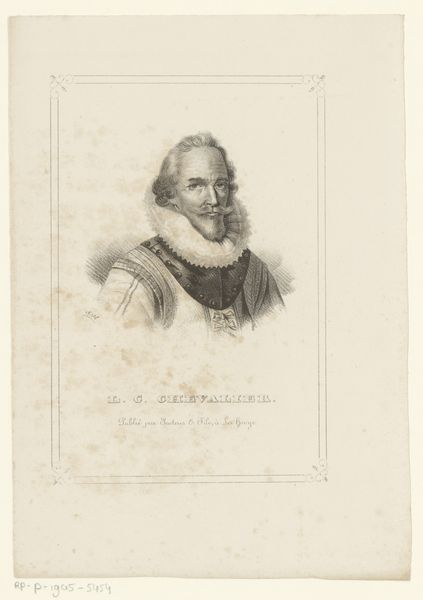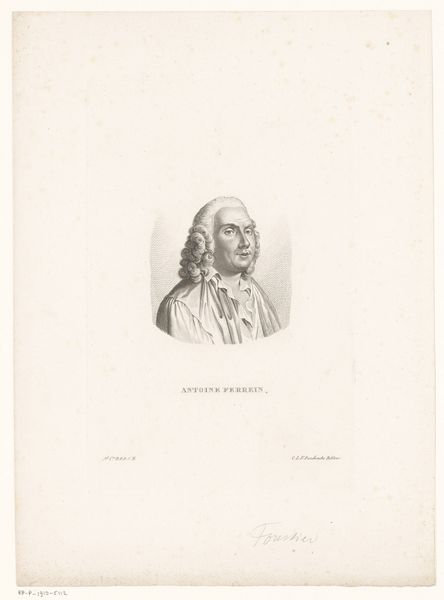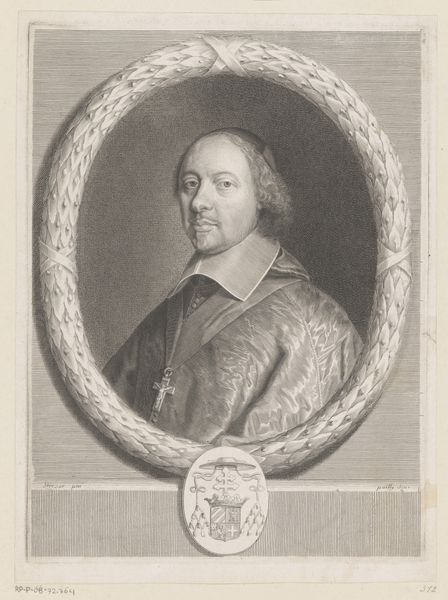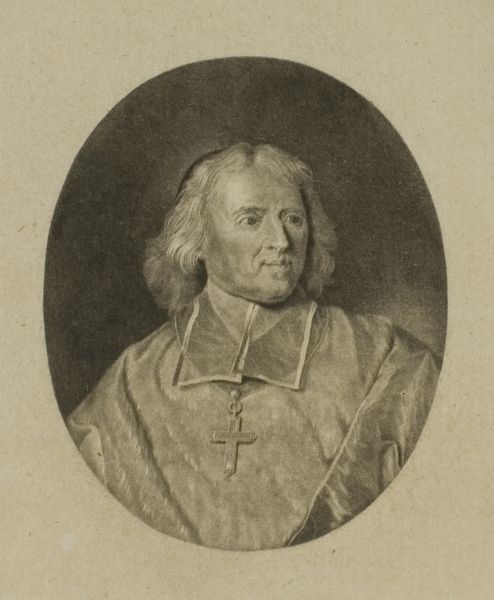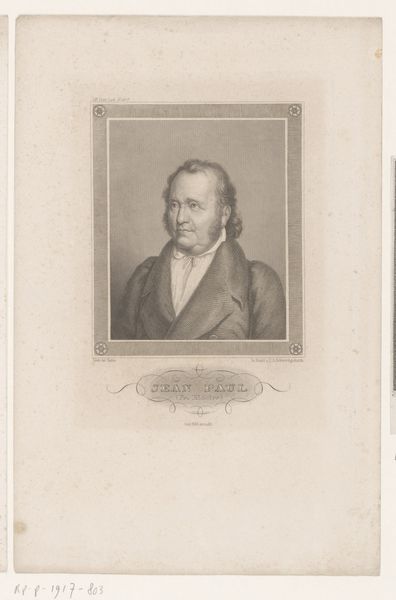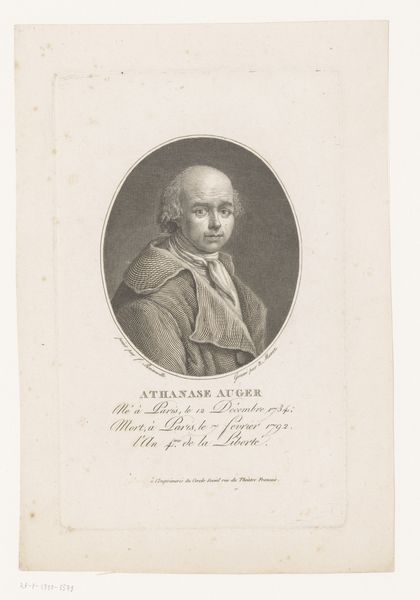
print, etching
#
portrait
#
16_19th-century
# print
#
etching
#
realism
Dimensions: 228 mm (height) x 204 mm (width) (plademaal)
Curator: Here we have an etching from 1851 by Erling Eckersberg titled "Salomon Thurcowitsch", currently residing here at the SMK. Editor: It has such a pensive mood; the man's steady gaze feels very weighted. He's holding that walking stick almost like a scepter. Curator: Indeed. I see this work existing in the framework of increasing artistic interest in depicting people who had formerly been underrepresented in Western art. Looking closely at the way Thurcowitsch has been depicted, we can trace evolving societal attitudes regarding representation. His clothing is carefully depicted. It represents both religious tradition, yet we see European tailoring as well. Editor: Yes, that very prominent walking stick seems to hold a significant symbolic charge. In many cultures, a staff represents authority, wisdom, and guidance, echoing ancient power structures and shamanic traditions. Its height compared to the subject suggests more than mere physical support, maybe also intellectual and moral fortitude. Curator: Definitely. The fact that it is being held vertically also suggests steadfastness. Given Thurcowitsch’s name, this is, no doubt, a depiction of a Jewish man in Denmark. Consider what the image may communicate concerning cultural interactions during a time of growing nationalism across Europe, yet within a state that historically offered refuge. Does Thurcowitsch come to represent a challenge to a rigid, singular vision of Danish national identity? Editor: Perhaps, but it's more layered. I feel the way Eckersberg renders his beard and hair adds another dimension. The length, texture—these resonate with established archetypes of sages or prophets. In that sense, beyond politics, this portrait participates in a much older visual vocabulary concerning knowledge and spiritual insight. It also conveys aspects of ethnic markers but moves beyond. Curator: Absolutely. So, instead of simply considering this a realist portrait, we must ask ourselves what performative and representational choices were consciously deployed in creating it and for what reason. To see the artwork in this way shifts the lens from the image to the image-maker. Editor: Examining these intersecting layers allows for a greater grasp of the nuanced communication embedded in what initially looks like a straightforward 19th-century portrait. What started out as a quiet first impression now leaves us with potent crosscurrents of cultural narratives!
Comments
No comments
Be the first to comment and join the conversation on the ultimate creative platform.
